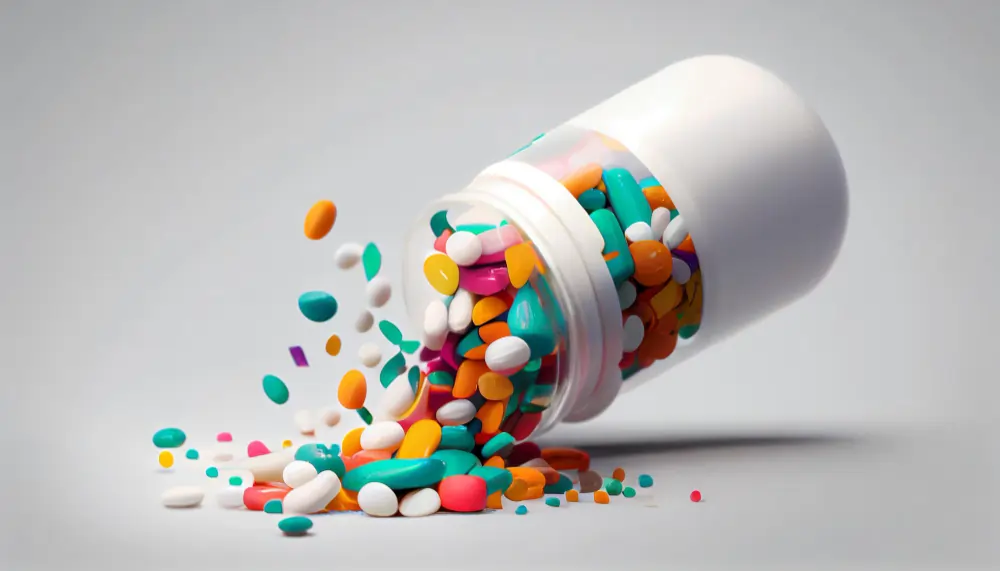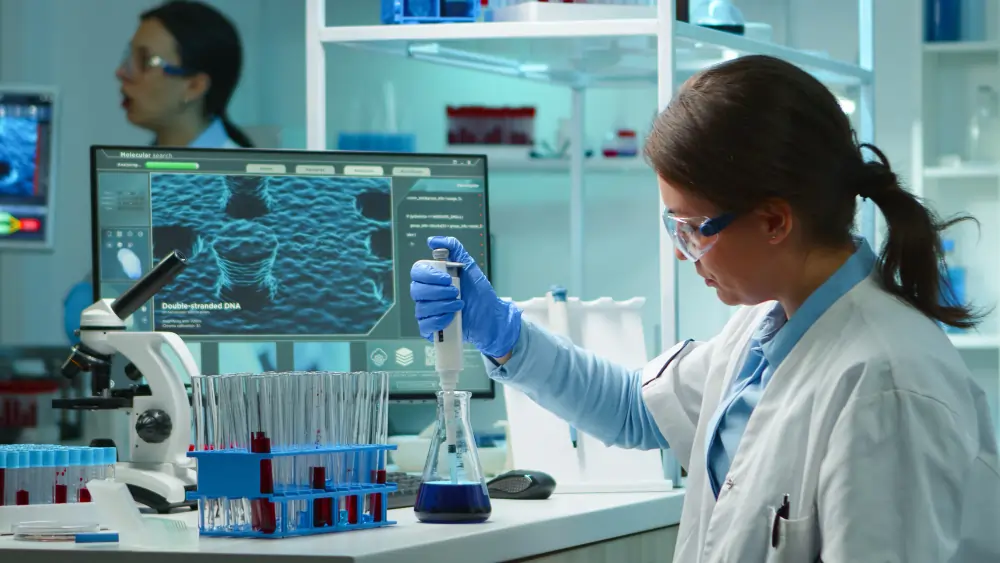
In our ever-evolving battle against bacterial infections, antibiotics have been crucial in saving countless lives and alleviating suffering. However, the overuse and misuse of these life-saving drugs have led to the emergence of antibiotic-resistant bacteria, posing a significant threat to public health. As we look to the future, it becomes imperative to explore innovative approaches to antibiotic development, delivery, and stewardship. In this article, we will delve into the future of antibiotics, examining the challenges we face and the groundbreaking innovations that hold the potential to overcome them.
Introduction
Antibiotics have been a cornerstone of modern medicine, providing a potent weapon against bacterial diseases. However, the widespread and inappropriate use of antibiotics has accelerated the emergence of antibiotic-resistant bacteria. These superbugs are capable of surviving the effects of antibiotics, rendering these once-powerful drugs ineffective. The World Health Organization has recognized antibiotic resistance as a global health crisis, highlighting the urgent need for innovative solutions.
The Need for Innovation
Developing new antibiotics has become an increasingly arduous task. Traditional methods rely on isolating compounds from natural sources, such as soil bacteria, but this approach has yielded diminishing returns. Many of the low-hanging fruits have already been discovered, leaving researchers to explore new avenues for antibiotic development. Moreover, the economic challenges associated with the development of antibiotics make it an unattractive investment for pharmaceutical companies. To overcome these obstacles, innovative approaches must be embraced.
Innovations in Antibiotic Research
Exploring Alternative Sources
Researchers are scouring uncharted territories to find new sources of antibiotics. For instance, investigations into the deep sea have uncovered bacteria with unique properties that could lead to the discovery of novel antibiotics. By venturing beyond conventional sources, there is a greater chance of finding compounds with the potential to save lives.
Harnessing the Power of AI and Machine Learning
Artificial intelligence (AI) and machine learning have revolutionized various fields, and antibiotic research is no exception. These technologies enable researchers to analyze vast amounts of data and identify patterns that humans might miss. AI-powered algorithms can help predict the efficacy of potential antibiotics, expediting the discovery process and saving valuable time.
Combating Resistance with CRISPR Technology
The revolutionary gene-editing tool, CRISPR, has shown enormous potential in combating antibiotic resistance. By targeting and altering specific genes in bacteria, CRISPR can disrupt mechanisms that confer resistance and make bacteria susceptible to antibiotics once again. This innovative approach could prove to be a game-changer in the fight against drug-resistant infections.
Promising Developments in Antibiotic Delivery

While innovative antibiotic development strategies are essential, equally important is how these drugs are delivered to the site of infection. Traditional oral or intravenous administration may not always be the most effective or targeted method. That’s where advancements in drug delivery systems come into play.
Nanotechnology for Targeted Therapies
Nanotechnology offers a promising avenue for targeted antibiotic delivery. By encapsulating antibiotics in nanosized particles, they can be transported directly to the site of infection, enhancing drug concentration while minimizing side effects. This approach has the potential to make conventional antibiotics more effective and reduce the likelihood of resistance.
Engineered Probiotics as a Novel Approach
Probiotics, commonly known for promoting gut health, can be engineered to deliver antibiotics directly to the microbiota. These “smart” probiotics have the ability to recognize and selectively eliminate harmful bacteria while leaving the beneficial ones unharmed. This targeted approach holds immense potential in minimizing disruptions to the delicate balance of the human microbiome.
Antibiotics and the Microbiome
Our body’s microbiome, comprising trillions of microorganisms, plays a vital role in maintaining our health. However, antibiotics can disrupt this delicate balance, leading to various health complications. Understanding the intricate relationship between antibiotics and the microbiome is crucial to mitigate potential harm.
Understanding the Delicate Balance
The microbiome, consisting of bacteria, fungi, viruses, and other microorganisms, influences numerous aspects of our well-being, from digestion to immune function. Antibiotics, while effective against harmful bacteria, can inadvertently disturb the equilibrium within the microbiota. This disruption can have far-reaching consequences on our health.
Impact of Antibiotics on Microbiota
Studies have shown that antibiotic use can lead to long-lasting changes in the composition and diversity of the microbiome. This alteration can leave individuals more susceptible to certain infections, allergies, and metabolic disorders. Additionally, the widespread use of antibiotics in livestock farming contributes to the transfer of antibiotic-resistant bacteria, further exacerbating the issue of resistance.
Future Challenges and Considerations
As we navigate the future of antibiotics, it is essential to address the challenges and considerations that lie ahead. A sustainable future with effective antibiotics requires tackling regulatory hurdles, and economic factors, and fostering global collaboration.
Regulatory Hurdles and Economic Factors
The road to antibiotic innovation is hindered by regulatory challenges and economic factors. Stringent regulations and lengthy approval processes make it difficult for new antibiotics to reach the market. Additionally, the perceived lack of profitability discourages pharmaceutical companies from investing in antibiotic research. Addressing these issues and creating an environment that incentivizes antibiotic development is crucial.
Global Collaboration for Antibiotic Stewardship
Antibiotic resistance knows no borders, making global collaboration an essential component in the fight against it. Countries must work together to establish robust antibiotic stewardship programs, promoting responsible antibiotic use and minimizing the development and spread of resistance globally. Efforts should focus on raising awareness, improving surveillance, and implementing effective strategies to preserve the efficacy of existing antibiotics.
Conclusion: The Future of Antibiotics
The future of antibiotics holds both immense challenges and exciting innovations. To safeguard the efficacy of antibiotics and combat the growing threat of antibiotic resistance, we need to foster an environment that encourages innovation and cooperation. Embracing new approaches, such as exploring alternative sources, harnessing AI and CRISPR, and advancing antibiotic delivery systems, can pave the way for a sustainable future with effective antibiotics. By doing so, we can ensure that these life-saving drugs continue to be effective tools in the battle against bacterial infections.
FAQs
Q: Are there currently any new antibiotics being developed?
Yes, despite the challenges, there are ongoing efforts to develop new antibiotics. Researchers are exploring alternative sources, utilizing AI and machine learning, and harnessing technologies like CRISPR to combat resistance.
Q: Why is antibiotic resistance a global health crisis?
Antibiotic resistance threatens our ability to treat common bacterial infections effectively. It can lead to prolonged illnesses, increased mortality rates, and higher healthcare costs. The loss of effective antibiotics would have a devastating impact on public health worldwide.
Q: How does nanotechnology improve antibiotic delivery?
Nanotechnology allows antibiotics to be encapsulated in nanoparticles, enabling targeted delivery to the site of infection. This approach enhances drug concentration while minimizing side effects and reducing the likelihood of resistance.
Q: Can engineered probiotics replace traditional antibiotics?
Engineered probiotics have the potential to deliver antibiotics directly to harmful bacteria while sparing beneficial ones. However, it is unlikely that they will entirely replace traditional antibiotics. Instead, they offer a targeted approach in specific scenarios.
Q: What can individuals do to contribute to antibiotic stewardship?
Individuals can play a crucial role in antibiotic stewardship by using antibiotics as prescribed, completing the full course of treatment, and not sharing leftover antibiotics. Additionally, raising awareness about antibiotic resistance and supporting responsible antibiotic use is essential for tackling this global challenge.


